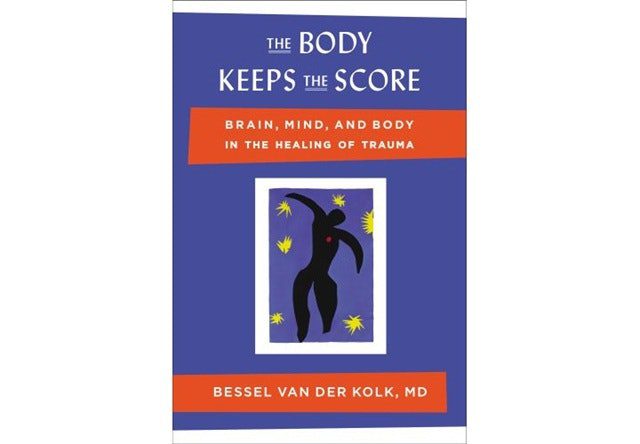As a life coach dedicated to helping individuals navigate their mental and emotional challenges, I’m always looking for innovative and effective ways to support healing and growth.
One such method that has gained significant attention in recent years is neurofeedback therapy.
Dr. van der Kolk, a renowned psychiatrist, researcher, and educator, has spent decades studying how children and adults respond to traumatic experiences and how to best support their healing process.
His work in neurofeedback therapy, in particular, caught my attention due to its profound potential for healing the mind by reconnecting it with the body.
Understanding Neurofeedback Therapy
Neurofeedback therapy, often referred to as EEG biofeedback, is a non-invasive technique that enables you to gain control over your brain functions by providing real-time feedback on your brainwave activity.
Through this process, you can learn to regulate your brain activity while improving your mental well-being.
In The Body Keeps the Score, Dr. van der Kolk emphasizes the effectiveness of neurofeedback therapy, particularly for those who have experienced trauma, as well as those dealing with ADHD, anxiety, and depression.
During a typical neurofeedback session, electrodes are gently placed on the scalp to monitor the brain’s electrical activity. This data is then displayed on a screen in a way that allows the individual to interact with it—often through a video game or a simple visualization.

Since I have been so excited and personally benefited from using neurofeedback, my excitement about this approach was further amplified after reading Dr. Bessel van der Kolk’s groundbreaking book, The Body Keeps the Score.

The goal is to provide immediate feedback on brain activity, enabling you to learn how to modify and control your brainwaves over time. This process is akin to training a muscle; with consistent practice, the brain learns to function more effectively, leading to lasting improvements in mental health.
The Science Behind Neurofeedback: How It Works
Neurofeedback therapy is grounded in the principles of operant conditioning, a type of learning where behaviors are influenced by the consequences that follow them.
In the context of neurofeedback, positive feedback is given when the brain functions in a desired manner, encouraging you to repeat these patterns. Conversely, negative feedback is provided when brain activity deviates from the desired state.
For instance, during a session, you might be watching a scene that brightens when your brain maintains proper focus and attention and dims when your attention wavers. Over time, this training helps you develop greater control over your brain’s activity, promoting healthier brain function and reducing symptoms associated with various mental health conditions.

Dr. van der Kolk’s research demonstrates that neurofeedback therapy has the potential to rewire the brain, allowing individuals to break free from the patterns of brain activity that contribute to their distress.
This is particularly important for those who have experienced trauma, as trauma often leaves a lasting imprint on the brain’s functioning.
By retraining the brain through neurofeedback, individuals can begin to heal from the effects of trauma and regain a sense of control over their mental and emotional states.
The Transformative Benefits of Neurofeedback
One of the most compelling aspects of neurofeedback therapy, as highlighted in The Body Keeps the Score, is its ability to empower you to take control of your mental health.
Unlike medications, which often provide only temporary relief, neurofeedback offers a more lasting solution by teaching the brain to function more effectively.
This is especially significant for individuals with ADHD, where research has shown that neurofeedback can be as effective as stimulant medications in reducing symptoms.
For trauma survivors, neurofeedback therapy offers a new avenue for healing.
Dr. van der Kolk explains that trauma can disrupt the brain’s ability to regulate emotions, leading to a range of mental health challenges. Neurofeedback helps to restore balance by enabling individuals to retrain their brain activity, which can result in a profound improvement in their overall sense of well-being.
This is particularly valuable for those who have found traditional therapies insufficient or overwhelming.
Another major benefit of neurofeedback is its non-invasive nature and minimal risk, making it an attractive option for those seeking alternatives to medication or conventional therapy.
I’ve seen firsthand how clients appreciate the gentle and empowering approach of neurofeedback, which allows them to take an active role in their healing process.
A Real-Life Example: Stacy’s Journey to Healing
Dr. van der Kolk shares numerous case studies in his book that illustrate the transformative power of neurofeedback therapy.
One particularly moving story is that of Stacy, a young woman who had endured severe trauma and was left feeling emotionally unstable and disconnected from her surroundings. Traditional therapies and medications had offered little relief, leaving her in a constant state of distress and fear.

When Dr. van der Kolk introduced Stacy to neurofeedback therapy, it marked the beginning of a remarkable transformation.
During her sessions, Stacy’s brainwave activity was monitored and displayed on a screen, allowing her to interact with the feedback in various ways. By focusing on calming images and learning to modulate her brain activity through visual and audio cues, Stacy began to notice significant improvements in her emotional regulation.
As she continued with neurofeedback therapy, Stacy experienced a sense of stability and calm that had eluded her for years. The intense feelings of anxiety and panic that once dominated her life became more manageable, allowing her to reconnect with herself and her surroundings.
Stacy’s story is a powerful testament to the potential of neurofeedback therapy to bring about deep and lasting healing for those who have experienced profound trauma.
The Future of Neurofeedback Therapy
The Body Keeps the Score not only sheds light on the potential of neurofeedback therapy but also highlights the growing recognition of the mind-body connection in the field of mental health.
As more research emerges and awareness of neurofeedback therapy grows, this innovative approach will likely become an increasingly important tool in the treatment of various mental health conditions.
For those struggling with trauma, ADHD, anxiety, or depression, neurofeedback therapy offers a pathway to healing that is both empowering and transformative. By providing real-time feedback on brain activity, neurofeedback helps individuals learn to regulate their brain functions, leading to lasting relief from symptoms and a renewed sense of well-being.
As a life coach, I believe that exploring neurofeedback therapy could be a pivotal step toward recovery and well-being for many people. Dr. van der Kolk’s insights into the profound connection between our minds and bodies offer hope and a pathway to a more balanced and fulfilling life.
Whether you’re dealing with the effects of trauma or seeking to improve your mental health, neurofeedback therapy holds the promise of helping you reclaim control over your mind and, ultimately, your life.
You can click here to set up a time to talk to me further about how it might be helpful for you or your child.






Recent Comments